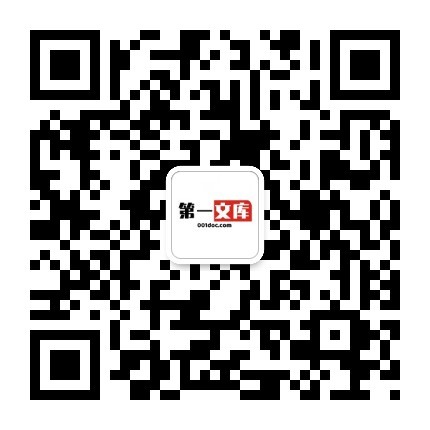北京大学 政学者论文集(2001) 我与君政.docx
CIUN.PIIYS.LETT.Vol. 18,5 6(2001) 834A Non-invasive Method of Tracing Spiral Tips ”WANG Kai(王凯),MAO XiaoMing(毛晓明),OU-YANG Qi(欧阳顽)Depart inent uf Physic,<uid Mesoscopic Physics Laboratory Peking University, Beijing 100871(Rxxcived 27 October 2000)A new method is developed to trace the tip of spiral waves in an excitable medium. The in/orniation of a spiraltip movement is obtained from only six probes. This method can trace the tip of a simple rotating spiral as weJJas a complex spiral tip movement. More import<uitly it can be used to distinguish between a spir<d and a targetwave. The method is checked with data by experiments and numerical simulations and /bund to be successful.PACS: 87.17. -d, 82.40. Ck, 87.17. AdSpiral aiid target wave patterns are ubiquitous innature and have been observed in a variety of con-trolled physical】? chemical,口,可 biological,田创 andphysiologicall"9】 systems. A target i)atteni is gen-erated from a rhythmic centre which sends concentricwaves travelling outward, wliilc a spiral wave is or-gcuiized by a topological defect and sclf»suslaincd刊Both the waves take place iii a heart with arrhyth-mias, where cardiac electrophysiological waves controlthe heart beat. In recent decades, cardiologists havedevelojxjd an effective method of coping with targetwaves by killing the extra rhythmic centres iii a heart,using microwaves; wliile killing spiral waves is still ailunsolved problem.阿 Thus, a cardiologist needs to di-agnose the type of wave source in order to launch theappropriate tlierapy.Since it is presently impossible to measure a high-resolution activation map iii an intact human heart,to distinguish between cardiac targets and spirals isstill a problem for cardiologists. On the other hand, asmall number of probes can be placed on the heart'sinner surface for measuring the local electric activityand deliver stimuli.1 which gives physicists ail o>port unity to solve the problem. Recently, Hall andGlass"2 proposed a method to distinguish a targetfrom a spiral. Their basic strategy is to generate an-other target wave iii the heart witli stimuli, and mea-sure the phase shift of local cardiac signals caused bythe interaction of the stimulated wave and the originalwaves, wliich gives the information of the wave type.Their method is workable in theory, but may intro-duce dangers with a large stimulation to the alreadyabnormal heart.Here, we present a non-invasive method to distin-guish between target aiid spiral using only nine localprobes. Moreover, our method can locate spiral sourceusing only six local probes in a heart in real time,wliich is a necessary step towards controlling spiralwaves in hearts. We test our method with numericalsimulations and experiments. Iii the experiment, wcuse the Belousov-Zhabotiiisky (BZ) reaction3 山 areaction-diffusion system as a model, which can qual-itatively reflect wave behaviour in hearts.""Spiral waves are the travelling waves moving out-w<ird from a spiral centre. In polar coordinates, thephase equation of spiral waves can be described as:夕(r, e、t)=矽(r) 土。+ 李t + 夕o,(1)where T is the period aiid 何 the initial phase ofwaves; the plus-minus sigil defines the cliirality of spi-lal. Theoretical study shows that au Archuiiedeaiispiral 砂(r)=一乎 is a good approximation to a spi-red found iii the real worldJ13 Our plan is to make ueof tliis approximation to locate the tip with six probes.The probes are divided evenly into two groups. Thecoordinates of probes hi each group are, respectively,(x, y), (x + d, y) and (i, y + d) in the Descartes coordi-nates, see Fig. 1. The location of the probes must befar from the spiral tip, guaranteeing the Aicliiniedeanapproximation. To ensure the phase iiifonnation de-tected by probes in a group come from the same pe-riod, A > /2d must be met.Fig. 1. Schematic representation of the arrangement ofone group of probes. The location of the probe is respec-tively at 1, 2, and 3.The information required for tliis method is thephase difference (3$ <pj) among different probes inthe same group. In order to reduce the error bar, anSupported partly by the National Natural Science Foundation of China under Grant No. 19725519 and Jun-Zheng Foundationin Peking University.©2001 Chinese Physical Society and IOP Publishing Ltd836WANG Kai el al.Vol. 18average value of 5 (pj over several periods is takenas the measurement. FYom Fig. 1, it is obvious that if人d is satisfied, we liavc:27r ,. d .八% - 82 = dcosO± - sin。,Arwhere (r, 0) is the polar coordinates of probe at (翁 y),by taking the spiral tip as the apex. From the cquartions we obtain:(31 丹)sin。一(夕1 一 夕3)r cos。= ±d,(4)27r(31 -夕2) cos 0 +(81 93)sin 0 = d.(5)AThe above equations have two solutions of A, a positiveone and a negative one. Since A must be positive,
